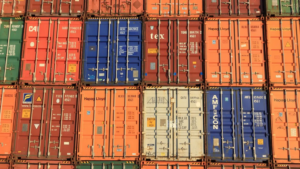As transportation and unexpected events turn supply chains upside down, consumers are getting used to the wait.
Supply chains face disruptions from different sides of our global society. In North America, most consumers would think supply chain disruptions initially started with the pandemic, but in reality, supply chains have been affected by more than COVID-19.
“From an economic perspective, we would say that there’s a misalignment — we have too many of some inputs and not enough demand, and too much of other inputs,” says Michelle Klieger, owner of Stratagerm Consulting. “We’re just not aligned with what is needed. How did this happen?”
Klieger says that one of the key factors starting disruptions began with the U.S.-China Trade War in 2018, which caused an initial shock to supply chains by stopping the flow of goods in some directions. Not only did that slow trade down, but prices got higher, and it created uncertainty around sourcing to avoid backlash from tariffs.
Then the pandemic hit the globe.
“The pandemic led to lockdowns, which suddenly killed supply and demand,” she says. “As global lock downs eased, we saw that demand come back and some of the supply come back. We’ve really realized that our goal with globalization has been to have an extremely efficient supply chain.”
Consumers have been used to the “Amazon Effect” — the desire for goods to be shipped at an increasingly fast rate with two-day shipping or even two-hour pickup.
“Consumers are returning more to traditional patterns of consumption, but the real story has been one of congestion,” says Barry Prentice, professor of Supply Chain Management, at the I.H. Asper School of Business, University of Manitoba. “We’ve just simply overwhelmed the railways, the trucking industry — everything moving goods.”
From the transportation industry, Prentice says there are a lot of places problems can arise due to long distances to get supply to the coast. The industry can’t predict where problems are going to pop up.
“We also have a situation right now where oil prices are very high, and the system has been short of oil for various reasons,” he says. “We see a lot more oil moving by rail than would otherwise be the case.”
The rise in oil prices isn’t the only issue, though. There’s also been a spike in diesel fuel prices — while most of your average consumers will be more concerned with high gas prices, Prentice says it’s important to remember the world runs on diesel.
“Equipment for the fields, the trucks, aviation, the ships… it’s all run by diesel,” he says. “I’ve already seen evidence that the diesel price and the gasoline price are going to widen. When you crack a barrel of crude oil, you get a certain proportion of diesel and a certain portion of gasoline. We’re going to have a demand for more diesel, which means we’re probably going to get more gasoline. We may see lower gasoline prices but rising diesel prices which will have a bigger impact on the supply chain, both for ocean freight but also for tractors and combines.”
As there continues to be uncertainty around the future, the positive note is that consumers, from agriculture to the greater society, are getting used to a world with supply chain disruptions.
With a solid business plan and a little forethought, businesses are able to continue on as normal.
“Businesses are starting to think more about resiliency and building independence,” says Klieger. “That might mean companies source 80% of their material abroad and 20% at home, so they’re always guaranteed to have some access.”
But, Klieger says companies and individuals are changing their behavior and thought process as well.
“We are all starting to change our behavior and build in that slack and keep some inventory,” she says. “All of that is the result of resiliency. It can be expensive, but it will smooth out some of the bumps in 2023.”
In addition, Prentice says to keep an eye on interest rates as we enter 2023. While you might think they won’t have an impact on you, interest rates have a broad effect on the world’s economy.
“Oil prices are coming down, and it’s not because the oil companies finally found their heart and decided they were charging too much — demand is lacking,” he says. “We’re still in the momentum of that past period and the interest rate impact is still starting to take effect. There’s going to be another interest rate rise in September. Amongst other things, this is going to make holding inventories more expensive.”
Want to hear the rest of the conversation? Make sure to watch at:
Want to read more Seed Speaks? Visit:
Will 2023 Be a Reset for Supply Chains?
How to Manage Abiotic Stresses During Pollination










